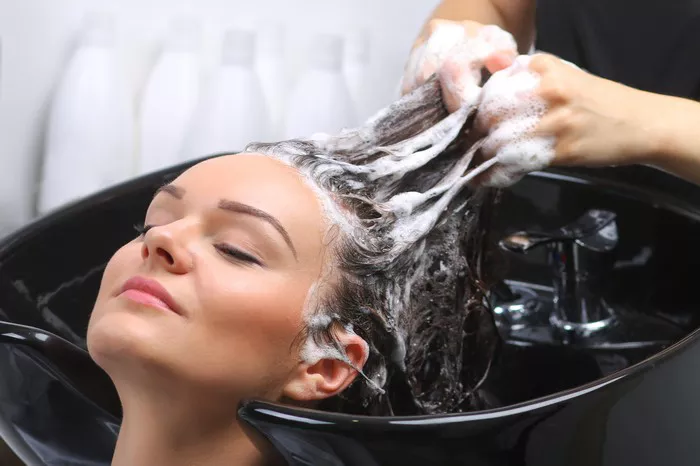In the realm of hair care, maintaining a healthy and nourished scalp is the foundation for luscious and radiant locks. One powerful yet often underestimated practice is oiling the scalp before washing. Not only does it provide essential nourishment, but it can also address various hair-related issues. In this comprehensive guide, we will explore the ins and outs of oiling your scalp before washing, so you can achieve the vibrant hair you’ve always dreamed of.
1. The Benefits of Scalp Oiling
Before diving into the specifics of how to oil your scalp, let’s understand why this practice is essential. Oiling your scalp offers a range of benefits, such as:
a. Nourishment: Scalp oiling provides vital nutrients and hydration to your scalp and hair follicles, promoting overall hair health.
b. Moisture Retention: It helps to retain moisture, preventing dryness, itchiness, and dandruff, which can be caused by an excessively dry scalp.
c. Improved Blood Circulation: Massaging the oil into your scalp stimulates blood circulation, which can promote hair growth.
d. Strengthens Hair: Regular scalp oiling can help strengthen hair, reduce breakage, and improve hair texture.
See Also: Choosing the Right Oil for Your Scalp: The Ultimate Guide
2. Selecting the Right Oil for Your Scalp
When it comes to scalp oiling, not all oils are created equal. Different oils offer distinct benefits, so it’s important to choose the one that suits your specific needs. Here are some popular options:
a. Coconut Oil: Known for its hydrating properties, coconut oil is excellent for dry and damaged hair.
b. Olive Oil: Rich in antioxidants and vitamin E, olive oil promotes scalp health and can help with dandruff.
c. Jojoba Oil: Ideal for those with oily scalps, jojoba oil balances oil production and provides hydration.
d. Argan Oil: This lightweight oil is perfect for all hair types and can add shine and softness.
e. Castor Oil: Castor oil is renowned for its ability to promote hair growth and strengthen hair.
3. The Step-by-Step Process
Now, let’s break down the process of oiling your scalp before washing into manageable steps:
a. Warm the Oil: Begin by warming your chosen oil in a microwave-safe bowl for a few seconds. Make sure it’s comfortably warm, not hot.
b. Part Your Hair: Divide your hair into sections to ensure even application. A tail comb can be handy for this step.
c. Apply the Oil: Using your fingertips, start applying the oil to your scalp, massaging it in gentle, circular motions. Work from the roots to the tips of your hair.
d. Full Coverage: Ensure that you cover your entire scalp with the oil, paying extra attention to areas that might be drier or itchier.
e. Massage: Once the oil is applied, gently massage your scalp for 10-15 minutes. This increases blood flow and helps the oil penetrate your scalp.
f. Leave It On: For the best results, leave the oil on your scalp for at least 30 minutes or overnight for a deep treatment.
4. Tips for Effective Scalp Oiling
To maximize the effectiveness of your scalp oiling routine, consider these tips:
a. Test Your Oil: If you’re new to scalp oiling or trying a new oil, it’s a good idea to do a patch test to ensure you don’t have any adverse reactions.
b. Choose the Right Frequency: The frequency of scalp oiling depends on your hair type and condition. While some may benefit from weekly oiling, others may find that bi-weekly or monthly treatments are sufficient.
c. Adjust the Quantity: The amount of oil you use should be based on the length and thickness of your hair. Aim for complete coverage without over-saturating your scalp.
d. Use a Shower Cap: To prevent oil from dripping and staining your bedding or clothes, consider wearing a shower cap during the treatment.
e. Rinse Thoroughly: When it’s time to wash your hair, make sure to rinse out the oil completely. Shampoo twice if necessary to ensure no residue remains.
5. Addressing Specific Scalp Concerns
Depending on your scalp’s unique needs, you can tailor your scalp oiling routine to address specific concerns:
a. Dandruff: For dandruff-prone scalps, add a few drops of tea tree oil to your carrier oil for its anti-fungal properties.
b. Hair Loss: If hair loss is a concern, incorporate essential oils like rosemary or lavender to stimulate hair growth.
c. Dry Scalp: Use a deeply hydrating oil, like avocado or almond oil, to combat dryness and itchiness.
d. Oily Scalp: If you have an oily scalp, opt for a lighter oil like grapeseed oil and focus on the hair ends rather than the roots.
In conclusion
Mastering the art of scalp oiling before washing can transform your hair care routine and help you achieve healthy, beautiful hair. By selecting the right oil, following a systematic process, and considering your specific scalp concerns, you can unlock the full potential of this practice. As with any hair care routine, consistency and patience are key. Give it some time, and you’ll soon see the remarkable benefits of oiling your scalp before washing for a truly stunning mane.


